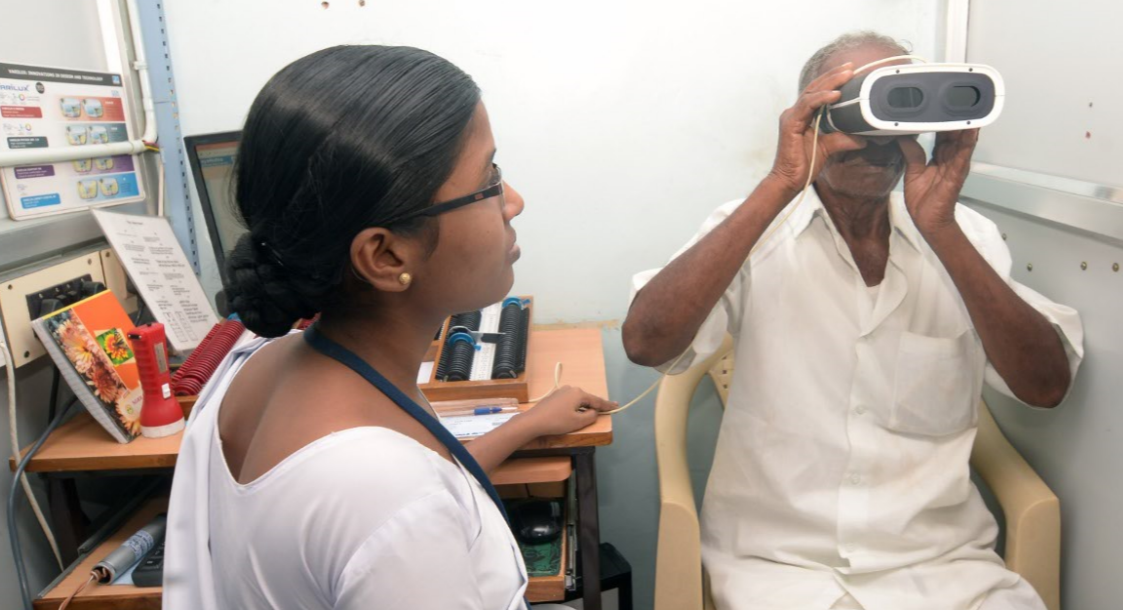Clinical validation of a novel wavefront autorefractor in a base hospital and vision center in rural India

| AUTHORS | |
| JOURNAL | Investigative Ophthalmology & Visual Science June 2017, Vol.58, 1139. |
| ABSTRACT | Purpose : To assess the best-corrected visual acuity (VA) and patient preference for eyeglasses prescribed by a novel autorefractor and an experienced refractionist in south India.
Results : The mean age of participants was 35 ± 13 years (range: 15-70). Of the 708 participants, 220 had presbyopia, 75 had an immature cataract, 21 had conjunctivitis, and 1 had keratoconus. Mean VA was 0.29 ± 0.36, -0.04 ± 0.11, and -0.01 ± -0.15 LogMar units before correction, with LSR, and with LAR, respectively. VA was significantly better after correction from both prescription methods (p < 0.01). VA from LSR was also significantly better than LAR (p < 0.01). A total of 47%, 91%, and 85% of patients had 20/20 vision or better, before correction, with LSR, and with LAR, respectively. Survey results showed 25% of participants had no preference of eyeglasses, 42% preferred LSR, and 33% preferred LAR. Conclusions : Our study shows a small benefit to eyeglasses prescribed by subjective refraction versus a novel autorefractor. Participants using eyeglasses prescribed by the autorefractor achieved a VA that was only approximately one letter worse than using eyeglasses prescribed by a refractionist. More than half of the participants either had no preference or preferred eyeglasses prescribed by the autorefractor. However, the required training to perform autorefraction is considerably shorter compared to subjective refraction. This is an abstract that was submitted for the 2017 ARVO Annual Meeting, held in Baltimore, MD, May 7-11, 2017. |
| LINK | Link |



